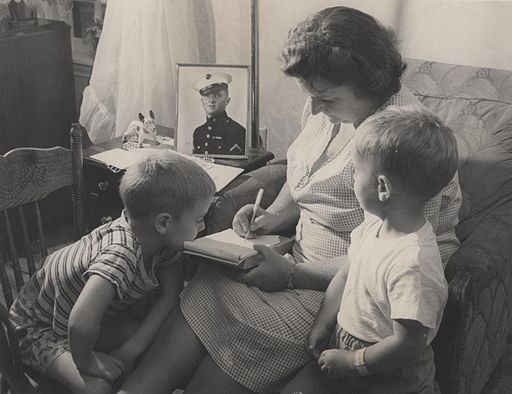ESL - Learning English through letter writing
ESL - Learning English through letter writing
04.02.2017
By Lovisa Jernsletten, adapted from Video: Family English from OER Commons
Overview
There can be many reasons why a family finds themselves facing a new country, a new language and even new customs. This program is aimed towards families attempting to learn English together, although it could work for anyone learning a new language. Learning the language of your new country can greatly lessen the stress of unfamiliar circumstances as well as bring the family closer by doing it together.
Goals
- Write letters
- Create a family scrapbook
Specifications
This program is a very simple way to approach a new language and on paper, the objectives are only two; to write letters and create a family scrapbook. But although simple, it will gradually increase vocabulary with every letter written and read.
The first exercise is to sit down and write a letter to a member of your family. The letter should start with a greeting, followed by a description of your family member’s physical attributes (what do they look like?) and then end with a goodbye. It is encouraged that you use any vocabulary aid you prefer, whether it is a dictionary or other resources such as the internet.
After the letter is completed, read the letter out loud to yourself. The last stage is to read it to the family member the letter is written for and then let them read it themselves. Each family member that is old enough to write a text should start at this stage. If they cannot write a text, they can simply listen to letters that are written to them.
The letters can be as simple or as complicated as you can manage. The important part is that you find the words that you need to get your thoughts across. You can use this type of letter writing at every skill level and each family member can increase the difficulty level at their own pace.
Example 1
Dear Julia
You are two years old. You are tall and strong. You have brown hair with curls. You have brown eyes. You have a nice smile. When you smile, you get a dimple under your right eye. Your laughter is funny.
With love,
Your Mom
Example 2
To my darling daughter Julia
I want to describe you as I see you. You are tall and strong for only being two years old. Your hair looks a lot shorter than it is because of all the beautiful curls on your head. Your eyes are big and brown and can melt my heart whenever you come to me to ask for any little thing, even if it is just a banana. Your smile lights up my heart and when you smile your dimple always shows itself under your right eye, immediately reminding me of your aunt Marja who has the exact same dimple. If I get you to laugh, it is impossible not to laugh with you because of your laughter is so infectious that sometimes I come and tickle you just to hear it.
With love,
Your Mom
Scrapbook
The scrapbook is a great way to not only hold all the letters that you write to each other, but also include a weekly journal of your family’s memories. The scrapbook should be a joint project with everyone taking part, so everyone can contribute a little bit every week, or the family members take turns every week to write the journal entry. After the scrapbook is ready for each week, the family reads it together. The scrapbook does not need to have any more than text and the letters unless the family wishes to spend time decorating it. The scrapbook can be as simple or as complicated as each family desires, the main point is to write the journal entries.
Exercises
Writing letters
- Write a letter to a family member describing their physical attributes
- Write a letter to a family member describing their personality
- Write a letter to a family member describing when you first met
- Write a letter to a family member with future hopes for them
- Write a letter to a family member describing any memory with them
- Keep writing letters with your own selection of topics
These exercises can be repeated at will. Do not worry about repeating things already written, repetition is great for learning a language. Keep pushing the limits of your vocabulary, look up new words and don’t hesitate to use them.
Creating a family scrapbook
- A folder, or a designated scrapbook
- Make sure it can hold all the letters (optional)
- Make a weekly journal entry
-
a) Everyone sits down together to write the journal entry and find a topic to write about
b) One person per week writes their perspective on the week’s events - Everybody sits together to read the journal entry for the week
To Consider
While it is certainly a form of expanding a vocabulary, it is advised to refrain from using negative words to describe family members. For this program to work, the family must be able to work together and in a positive way. It is suggested that any grievances are left out of the exercises and aired in a different way.
